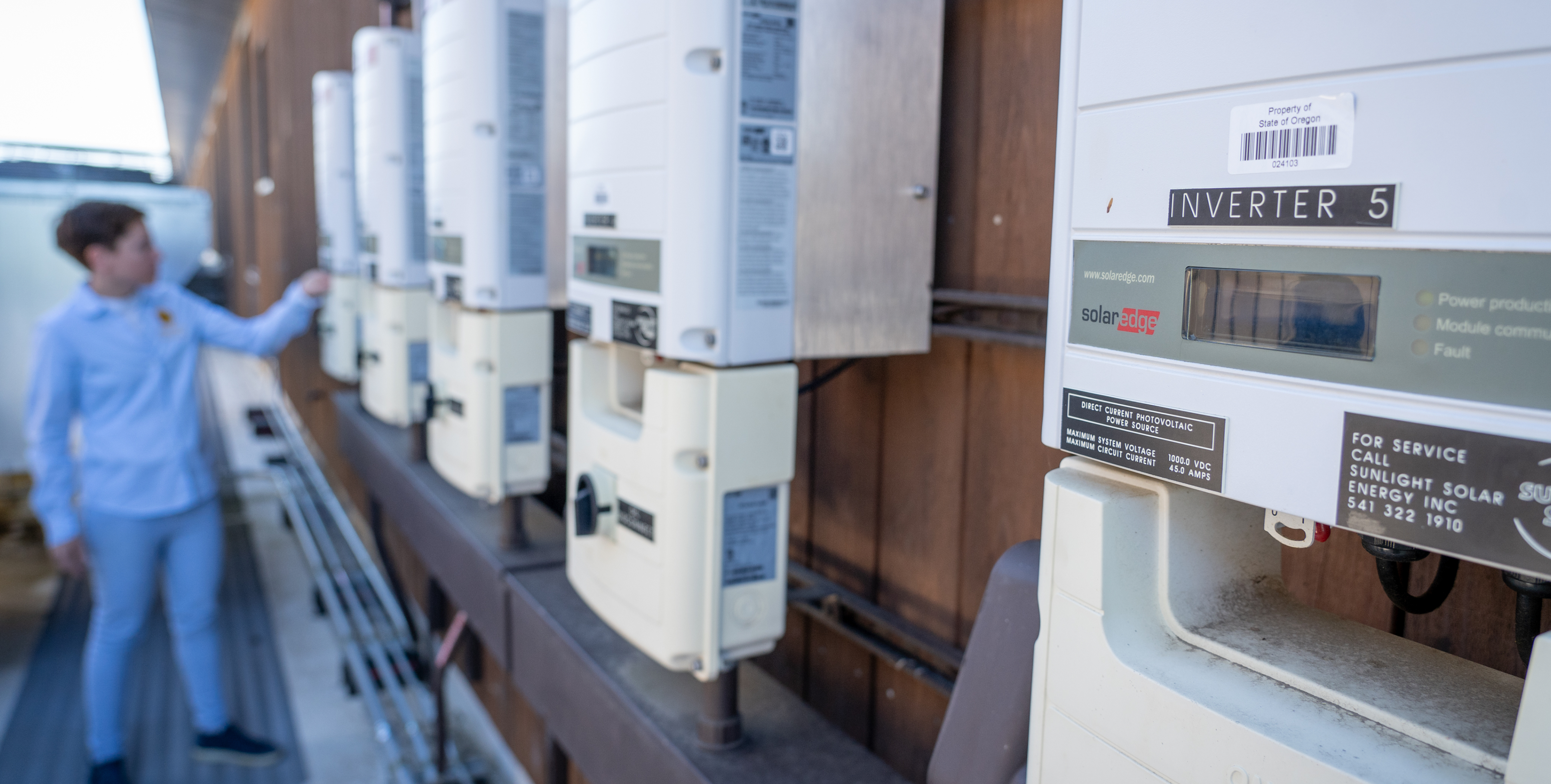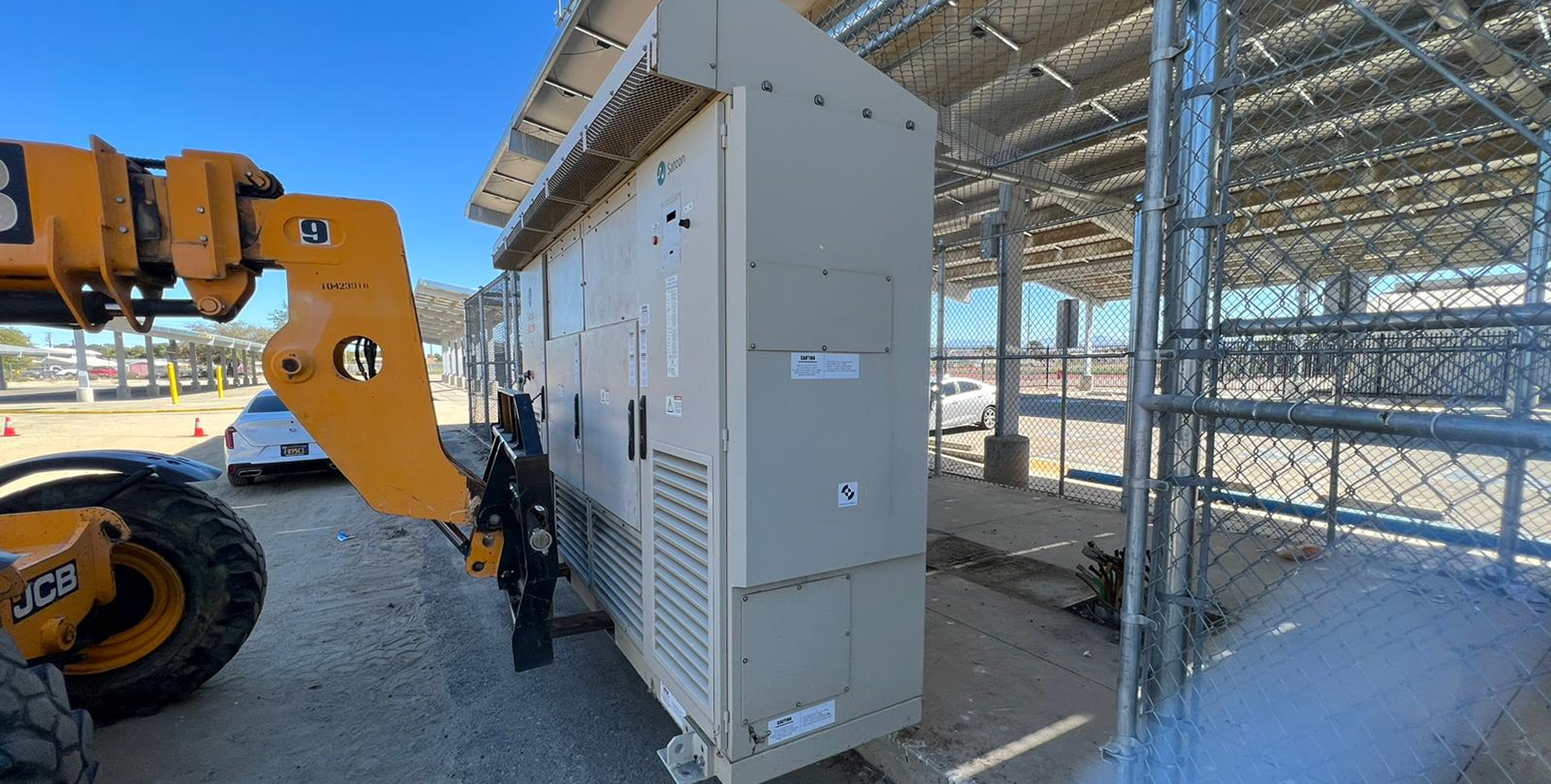Case Study
Turning a Town Hall into a Microgrid
Mt. Hood Town Hall
Project Highlights
Location
Mt. Hood Parkdale, OR
Capacity
55 kW solar array / 307 kWh energy storage
Equipment
PV and racking: Auxin Solar and PowerShingle Hybrid inverters: Sol-Ark 15K-2P Battery energy storage: HomeGrid Cube 60 kW / 307.2 kWh


Challenge
Mt. Hood Town Hall is a community gathering place in the Upper Hood River Valley. It acts as a recycling center, community meals distribution hub, middle-school classroom, a venue for special public events, and a relief center during emergencies. Originally built in 1914 and owned by Hood River County, the facility is a registered historic building.
Due to its geography, Hood River County faces unique outage-inducing events including wildfires, ice storms, earthquakes, high temperatures, and high winds. Much attention was drawn to this in 2018, when the Hood River County Energy Plan was adopted, making energy resilience a top priority.
Fast forward to September 2023: With a specific site for a microgrid in mind and a list of resiliency goals in hand, Hood River County received a grant from the Oregon Department of Energy’s Community Renewable Energy Grant Program to fully fund a microgrid feasibility study for the proposed project.
Approach
Our team performed a load study, built resilience and financial models, assisted in equipment selection, and delivered a comprehensive feasibility study report and 30% preliminary plan set. We also shared our findings at a public comment event organized by the project partners, and adjusted the preliminary report based on feedback from the 40-50 community members in attendance.
Project Hurdles
Mayfield’s feasibility studies are iterative by necessity. Microgrid systems are complex. Our process is designed to identify previously unknown constraints, then we work with the client to find a workable solution.
The Mt. Hood Town Hall microgrid feasibility study provided a few examples of known and unknown constraints. We evaluated these with input from the Hood River County Energy Council, the Mt. Hood Town Hall Association (MHTHA) Board of Directors, and community members, to ensure the end result satisfied all parties.


Grant Funding
The feasibility study was fully funded by an Oregon Department of Energy construction grant of up to $1 million, which acted as a firm budget constraint.
We designed the entire microgrid system around a $1 million budget for procurement and construction.
Load Selection
Due to wide seasonal variability in solar production, it was virtually impossible to achieve the initial goal of two weeks of full backup power in the middle of winter with only PV and battery resources.
During preliminary analysis, we modeled four load scenarios ranging from most inclusive (33 loads) to least (18 loads), and generated a synthetic load profile representing assumed electrical consumption patterns during each scenario.
Historic Building Designation
Mt. Hood Town Hall is a registered historic building, which puts it in a stricter permitting category that aims to retain the building’s historical charm. We therefore could not default to maximizing the available roof space for a PV array. Instead, we designed the entire system to balance functionality and aesthetics.
We gathered site information from the MHTHA and visited the site to identify suitable locations for new microgrid equipment. Various PV canopy options were evaluated with MHTHA and the authority holding jurisdiction, so we could settle on an eye-pleasing yet permit-able design.

Result
The entire feasibility study took about four months to complete. Our deliverables included a feasibility report with a system description, modeling inputs and assumptions, equipment specifications, and other important project details along with a 30% preliminary plan set.
Hood River County submitted the report and plan set as part of its construction grant application, which was later approved for the maximum amount of $967,000. Grant distributors are generally risk averse. Mt. Hood Town Hall project partners credit the information obtained from our thorough feasibility study report as one of the reasons for winning the competitive grant. As of this writing, construction is expected to begin in the fall of 2025.





